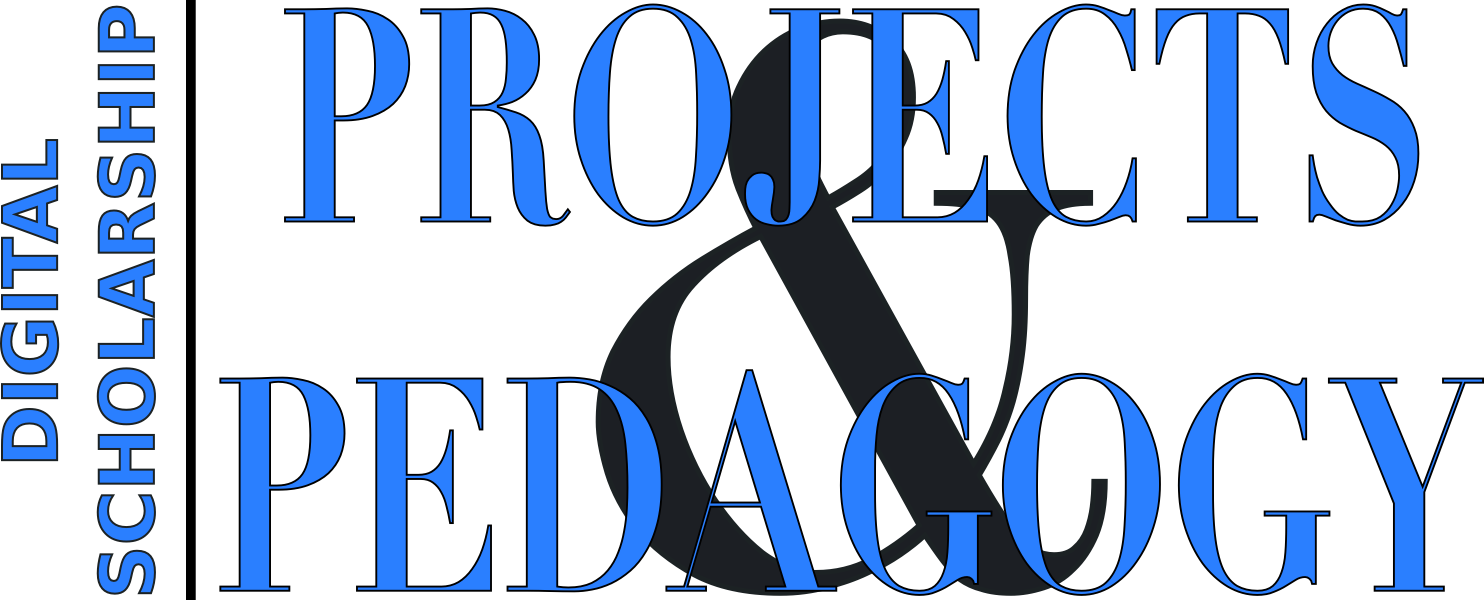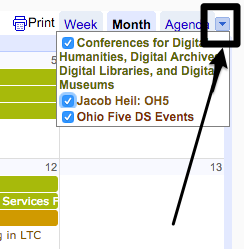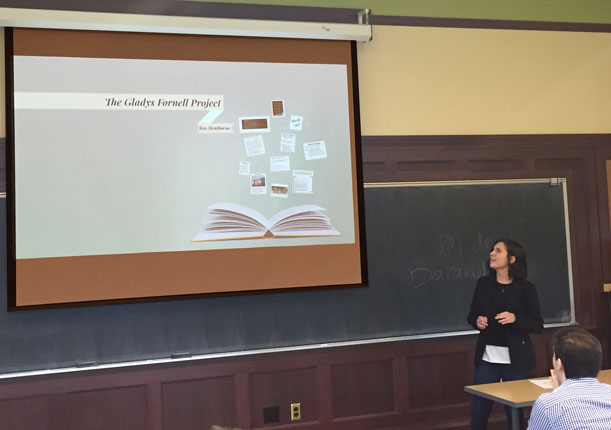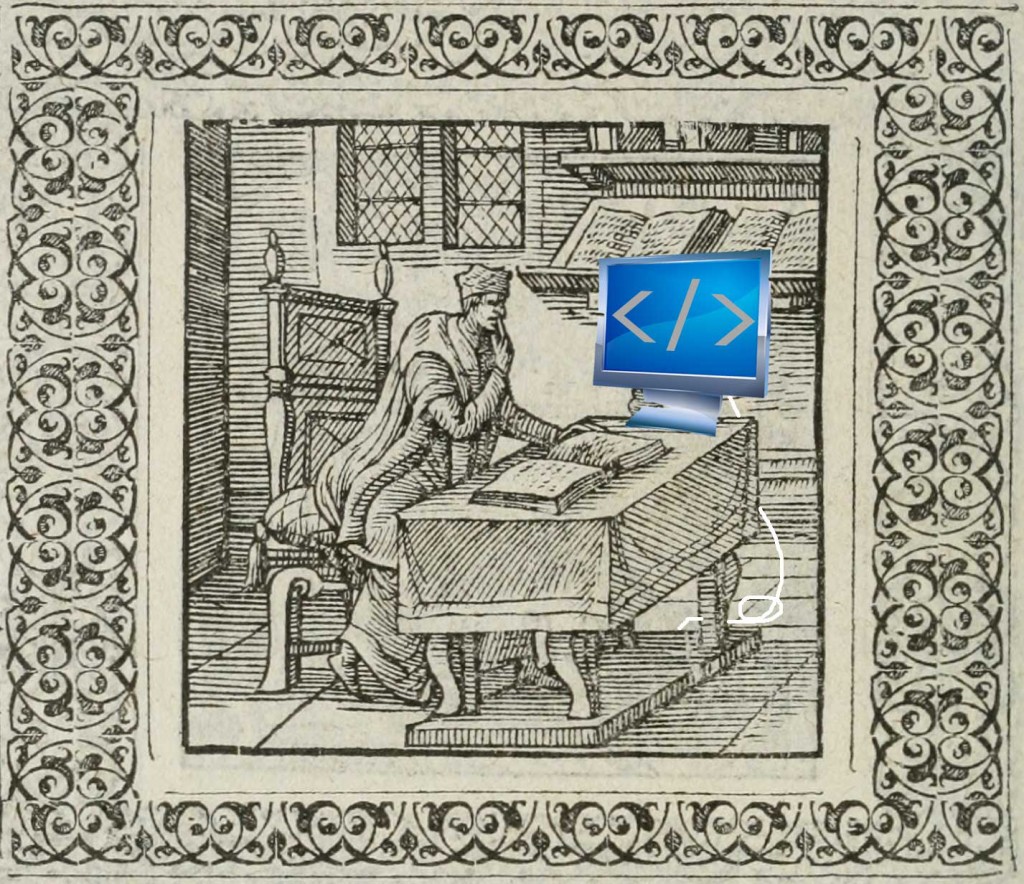Exciting News! 1
![[Students Congregating, Mid-1960s], UA104 Photographic Prints Collection, University Archives and Manuscripts, University of North Carolina at Greensboro, NC, USA. Downloaded: URL http://libcdm1.uncg.edu/u?/ui,53230, via DPLA http://dp.la/item/174b3922e5d4afb42ba088109b8ab117](http://digitalscholarship.ohio5.org/wp-content/uploads/2016/03/Students_Congregating_Mid1960s-300x217.jpg)
[Students Congregating, Mid-1960s], UA104 Photographic Prints Collection, University Archives and Manuscripts, University of North Carolina at Greensboro, NC, USA. Downloaded: http://libcdm1.uncg.edu/u?/ui,53230, via DPLA http://dp.la/item/174b3922e5d4afb42ba088109b8ab117
In the interest of sharing our experiences, I want to note here that the need for an extension grew out of two primary discoveries in the first couple of years of the grant: (1) we needed to continue to nurture the culture out of which large-scale projects would grow and (2) we wanted to involve students in meaningful ways. Taking the latter of these first, it was clear that, if we wanted to build sustainable infrastructure for project development, then outsourcing our computer programming and software development needs – at least in the traditional ways – was not going to be the best answer. It is often the fastest and easiest answer, but we thought we might be able to find opportunities, instead, to pay our liberal arts students for small-scale development projects. We might be able to tap into our classes – our curricular infrastructure, if you will – and to work with Educational Technology at times to identify student specialists with whom we might partner in the kind of building required by digital scholarship. This is not to say that students were merely entering data (although there is some of that as well), but developing apps and themes for use on our projects. Of course there was, at times, a negotiation between what project initiators might imagine and what we could responsibly expect of students that challenged their abilities while pushing our collective intellectual engagement with digital, scholarly endeavors. The negotiation, however, has been less about compromise than about basing “Projects and Pedagogy” on opportunities for the latter through the former.
It’s worth noting that, frankly speaking, the imagined scale of our projects has not often exceeded our technological ability to develop them. Rather, the challenge has been in establishing practical standards and useful workflows. This is not a statement about our abundant resources – far from it – but rather an acknowledgment that the digital culture in the Ohio Five continues to discover the possibilities in digital scholarship. This brings us back around to that other of the primary discoveries leading to our extension: that ours is a growing culture and I have had the opportunity to see the gap between imagination and possibility close incrementally as we have learned about, talked about, and kicked about tools, methods, and philosophies that push the boundaries of our pedagogical practices. This is to say that, while our projects to date have not all been at a grand consortial scale, we continue to have conversations about digital scholarship and to share the work that we do, thereby increasing our capacity to support this kind of Big Digital Scholarship simply as a function of our local, intentional, care-ful digital scholarship.
Looking forward, then, I (personally) will do my part to continue to build that capacity. I want to be a conduit for sharing and ideas, but I also want to be a bystander as that kind of sharing takes place. In other words, I hope that I’m able to help us think of a specifically consortial community of digital scholarship practitioners. I’d like for the consortium to be less of an abstraction insofar as digital scholarship is concerned, and more of a superstructure. Some of this is about resource management. To that end, in the near term, the grant is helping us to think through consortial digital preservation solutions and, perhaps more to the point, through philosophies about the preservation of the digital scholarship we are producing under the auspices of the grant and elsewhere on our campuses. To my mind, though, the consortial framework in this case is not as much about the technological solution as it is about the shared philosophies; about the investment, not in a tool, per se, but in a shared discourse about preservation tools. This is a microcosm, I hope, of a growing consortial discourse about digital pedagogies, collaboration on digital projects, and the evolving nature of knowledge production in higher education.
So, again, a heartfelt thanks to the Andrew W. Mellon Foundation for the opportunity to continue this invaluable work at this integral moment for digital scholarship and in the digital liberal arts.




 a wonderful job articulating just why she wants to encode a text as part of her IS rather than just transcribe it. In short (and I hope I’m doing justice to her thoughts here), it enriches her text – Glady Fornel’s Montel – and opens its potential for future scholarship, her own and others’. I’ll also note as an aside how it’s clear that some – maybe most – of the people who are thinking about Tess’s IS as a “digital IS” are thinking in terms of visible, human-readable results. That is to say that folks are thinking about
a wonderful job articulating just why she wants to encode a text as part of her IS rather than just transcribe it. In short (and I hope I’m doing justice to her thoughts here), it enriches her text – Glady Fornel’s Montel – and opens its potential for future scholarship, her own and others’. I’ll also note as an aside how it’s clear that some – maybe most – of the people who are thinking about Tess’s IS as a “digital IS” are thinking in terms of visible, human-readable results. That is to say that folks are thinking about  We should remember that one encodes in TEI for (maybe) two distinct, if related, reasons. Primarily TEI allows a scholar to plug into and share with a larger community of textual and literary scholars. I think that, for the purposes of the IS, we’re talking about a tiered argument for the utility of TEI encoding for which this is our baseline purpose. In this scenario, to my mind, the IS looks similar to a traditional IS with the addition of a digital edition that is basic TEI, enriched with header data and a potential contribution to the larger TEI/literary studies community. The argument here isn’t necessarily the making-public (i.e. publication) of a digital version of Montel, but a digital edition that can comprise the basis for future or additional digital analysis. What Tess has been calling the “Critical Introduction” (I think?) is the thing that looks like a typical argument in literary studies. But the IS will also include a section that explains “why a digital edition,” which is basically the argument above: in an increasingly digital scholarly landscape this edition will (a) contribute to the community, (b) increase the potential for future work on Montel/Fornell [the author] because of discoverability and standard markup (i.e. TEI), and (c) create a digital surrogate that has a greater chance of survival as technologies and digital infrastructure evolve.
We should remember that one encodes in TEI for (maybe) two distinct, if related, reasons. Primarily TEI allows a scholar to plug into and share with a larger community of textual and literary scholars. I think that, for the purposes of the IS, we’re talking about a tiered argument for the utility of TEI encoding for which this is our baseline purpose. In this scenario, to my mind, the IS looks similar to a traditional IS with the addition of a digital edition that is basic TEI, enriched with header data and a potential contribution to the larger TEI/literary studies community. The argument here isn’t necessarily the making-public (i.e. publication) of a digital version of Montel, but a digital edition that can comprise the basis for future or additional digital analysis. What Tess has been calling the “Critical Introduction” (I think?) is the thing that looks like a typical argument in literary studies. But the IS will also include a section that explains “why a digital edition,” which is basically the argument above: in an increasingly digital scholarly landscape this edition will (a) contribute to the community, (b) increase the potential for future work on Montel/Fornell [the author] because of discoverability and standard markup (i.e. TEI), and (c) create a digital surrogate that has a greater chance of survival as technologies and digital infrastructure evolve.